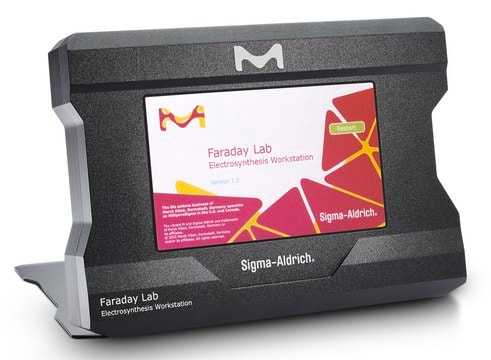939064
Lithium hydroxide ChemBeads

Sinónimos:
LiOH ChemBeads
About This Item
Productos recomendados
description
Reagent Type: Inorganic salt
Quality Level
form
solid
composition
loading of base, 14-16 wt. %
reaction suitability
core: lithium
SMILES string
[Li+].[OH-]
InChI
1S/Li.H2O/h;1H2/q+1;/p-1
InChI key
WMFOQBRAJBCJND-UHFFFAOYSA-M
General description
Application
For general uses, product is also available in powdered form (545856)
Features and Benefits
Other Notes
Versatile Methods to Dispense Sub-Milligram Quantities of Solids using Chemical Coated Beads for High-Throughput Experimentation
ChemBead Enabled High-Throughput Cross-Electrophile Coupling Reveals a New Complementary Ligand
Related product
signalword
Danger
hcodes
Hazard Classifications
Eye Dam. 1 - Skin Corr. 1B
Storage Class
8B - Non-combustible corrosive hazardous materials
wgk_germany
WGK 3
flash_point_f
Not applicable
flash_point_c
Not applicable
Choose from one of the most recent versions:
Certificados de análisis (COA)
Don't see the Right Version?
If you require a particular version, you can look up a specific certificate by the Lot or Batch number.
¿Ya tiene este producto?
Encuentre la documentación para los productos que ha comprado recientemente en la Biblioteca de documentos.
Nuestro equipo de científicos tiene experiencia en todas las áreas de investigación: Ciencias de la vida, Ciencia de los materiales, Síntesis química, Cromatografía, Analítica y muchas otras.
Póngase en contacto con el Servicio técnico









